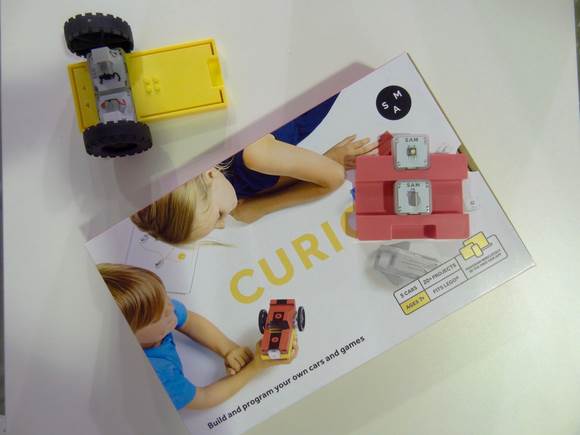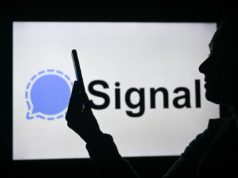Sam Labs teaches electronics without the tedium of plugging things together

Sam Labs showed off its forthcoming Curio educational electronics kit at IFA 2016 in Berlin.
Credit:
Peter Sayer/IDG News Service
Perhaps you’re old enough to remember when building interactive electronic devices involved breadboards, soldering irons and assembly code.
Tell young people today that, though, and they won’t believe you — especially if they’ve used one of the educational electronics sets Sam Labs is showing at IFA in Berlin.
The components in these sets are the same as you would find in beginners’ electronics kits of the 1970s and 80s: lamps, photo sensors, pushbuttons, potentiometers, tilt switches and DC motors.
The big difference is, there are no wires.
Instead, the components are mounted on small plastic blocks each containing a USB-rechargeable battery and a Bluetooth module. This lets them talk to one another and to a host PC, phone or tablet running Sam Labs’ visual programming app.
Turn the blocks on and they appear in the app’s workspace, where they can be linked to one another by drawing connections between them. Draw a line between the pushbutton block and the motor block, for example, and the app will use the Bluetooth connection to tell the motor to spin when it receives an “on” message from the button, and to stop when it receives an “off.”
The app’s workspace also contains virtual blocks that perform logical functions such as comparing the output of a potentiometer or photo sensor with some threshold, or checking whether one of several buttons is pushed.
Other virtual blocks represent actions such as capturing a photo from the host device’s camera, sending a tweet, or listening for a trigger from an IFTTT (If This Then That) recipe, allowing a degree of interaction with the real world and the Internet.
By linking real and virtual modules together, it’s possible to build a simple remote-controlled car, to raise a flag when someone tweets about you, or to snap pictures of everyone who enters a room.
Sam Labs sells the modules as kits. One of the first, a partnership with the Science Museum in London, is the Inventor, containing four wireless blocks (tilt sensor, photo sensor, buzzer and motor) for £99 (€129 or US$139).
At IFA this week the London-based company showed off its second kit, Curio, containing two DC motors, five other wireless blocks, two wheels and some pre-cut paper car bodies.
The box also contains a plastic car chassis that Sam Labs says “fits Lego.” There are two holes for inserting Lego axles at the back and a patch of Lego-compatible studs in the middle. Most of the modules are also exactly four Lego studs square, making it easy to slot them into frames made of Lego bricks.
Sam Labs hasn’t set a release date for Curio yet, but it’s likely to cost around £149.







